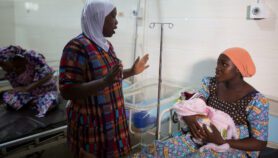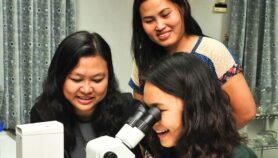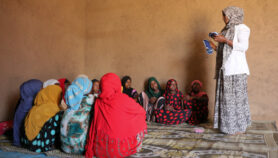By: Zoraida Portillo
Send to a friend
The details you provide on this page will not be used to send unsolicited email, and will not be sold to a 3rd party. See privacy policy.
[LIMA] Peru’s president-elect has outlined his vision for science, saying that he plans an ambitious, seven-fold increase in the proportion of gross domestic product (GDP) spent on science and technology (S&T) by 2016.
Ollanta Humala Tasso, who takes office at the end of this month (28 July), said that, by the end of his mandate, he wanted the S&T budget to exceed 0.7 per cent of GDP.
In an interview with SciDev.Net, he also called on the private sector to "respond to this challenge that will ensure the sustainable development of my country.
"If we want continuing growth economically, we cannot continue relying on technology from other countries," he said.
Humala, 49, a former Peruvian army commander, was elected on 5 June. Nine pages of his government plan are devoted to S&T.
Peru has one of the lowest S&T budgets in Latin America. Of its 115 public and private universities only four appear in Latin American university rankings.
"S&T will be one of the cores of our proposed model of development," Humala told SciDev.Net in the email interview. "In the electoral campaign we were the only party that explored in depth this issue which I, personally, consider crucial."
At the heart of his plan, Humala wants to foster cooperation and links between public research institutes, universities, and small and medium enterprises, through tax incentives for those companies that develop innovations or carry out research with their own resources.
But, "a big part of S&T spending will be devoted to the improvement of public universities, so they can also be centres of research," he said.
Humala plans to develop links between the educational and private sectors, and to hold technological fairs across the country. Opportunities for women will be included in the S&T policy.
"I hope at least two national economic groups establish their own centres of technological development," he said, referring to the often family-run conglomerates in Peru.
Humala’s plans for a Ministry of Science and Technology, have been criticised by many scientists, leading him to indicate some flexibility on the proposal: "The most important thing is we will boost scientific development, and creation of technology".
Benjamin Marticorena, former president of the National Council of Science and Technology (CONCYTEC) said: "In countries where these exceptional efforts to boost science, technology and innovation and science education have been successful, it is because their presidents have led the change and have always been attentive to their good development."
But he disagreed with establishing a ministry for S&T until policies are well established and implemented.
Marticorena said he believed that the increase in the S&T budget was feasible and in line with an estimate of costs made by the Forum for Science, Technology and Innovation.
Luis Destefano, an associate professor in the genomics unit of Cayetano Heredia University, said: "I don’t think the country can make the great leap in S&T without a major reform in public universities.
Francisco Sagasti, an expert in Latin American S&T policies and former executive director of independent organisation FORO National/International, welcomed the planned increase in S&T investment.
"This is the first time I have seen a president-elect speak up on this subject," he said.
But he added that that a dedicated ministry would "isolate S&T and create more bureaucracy".













